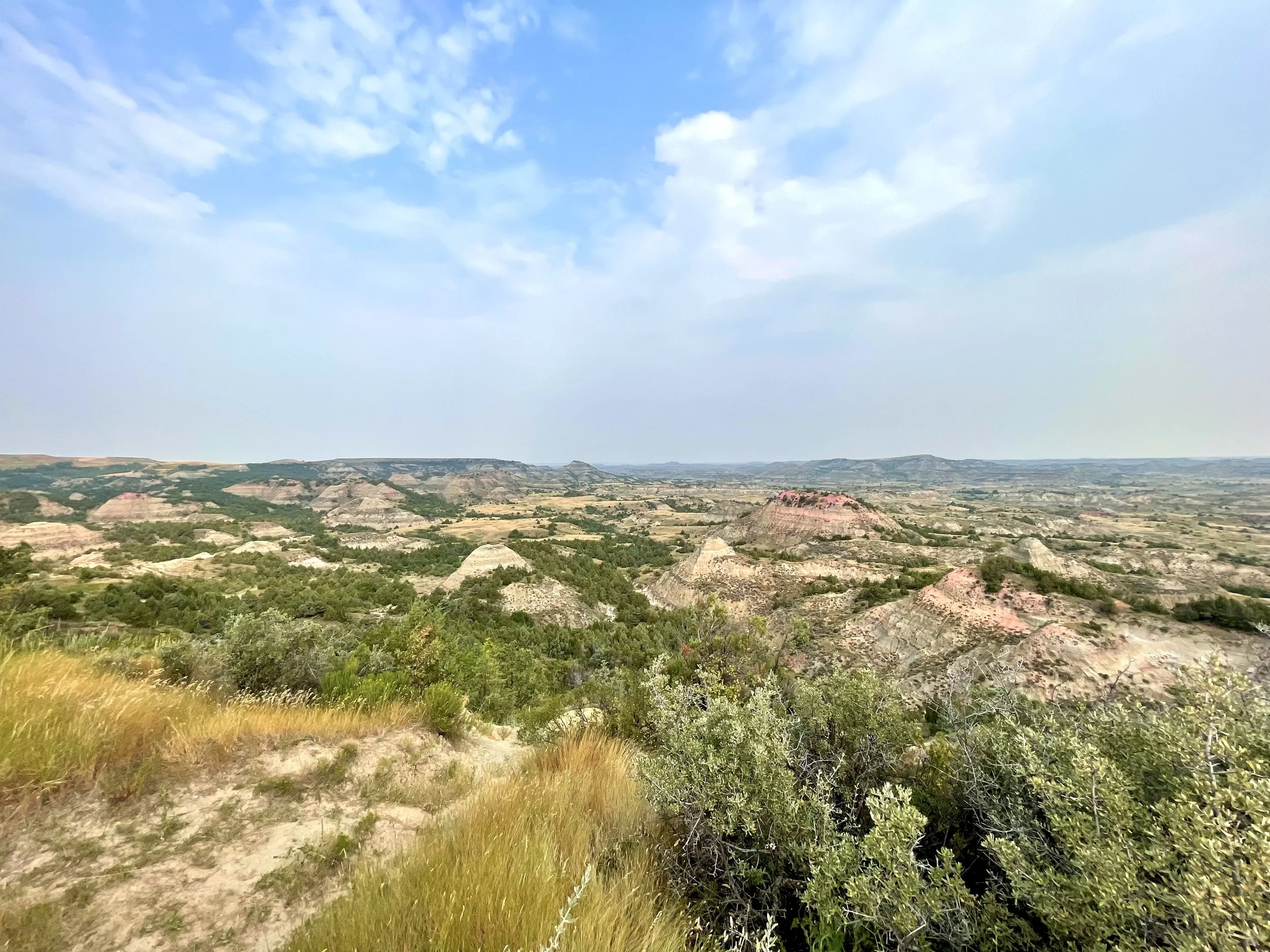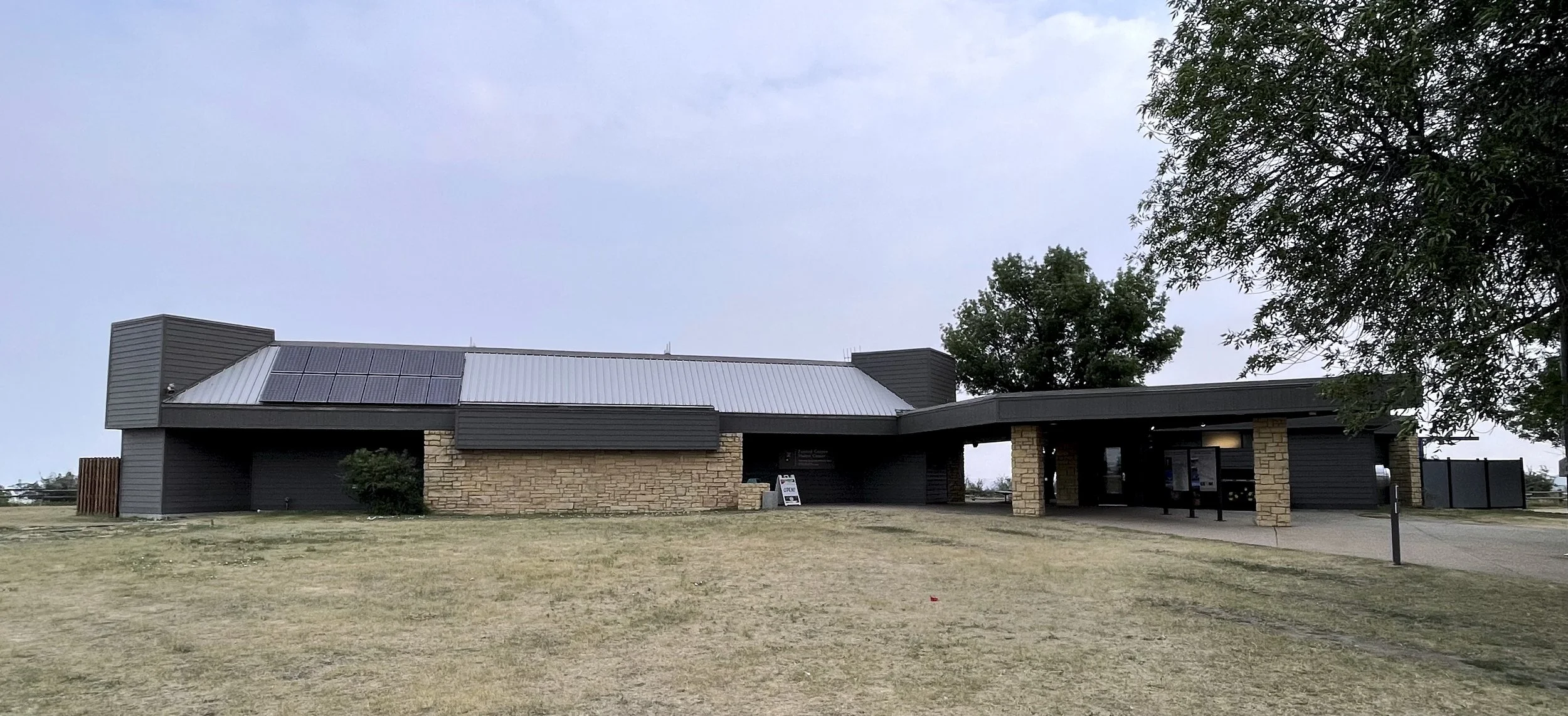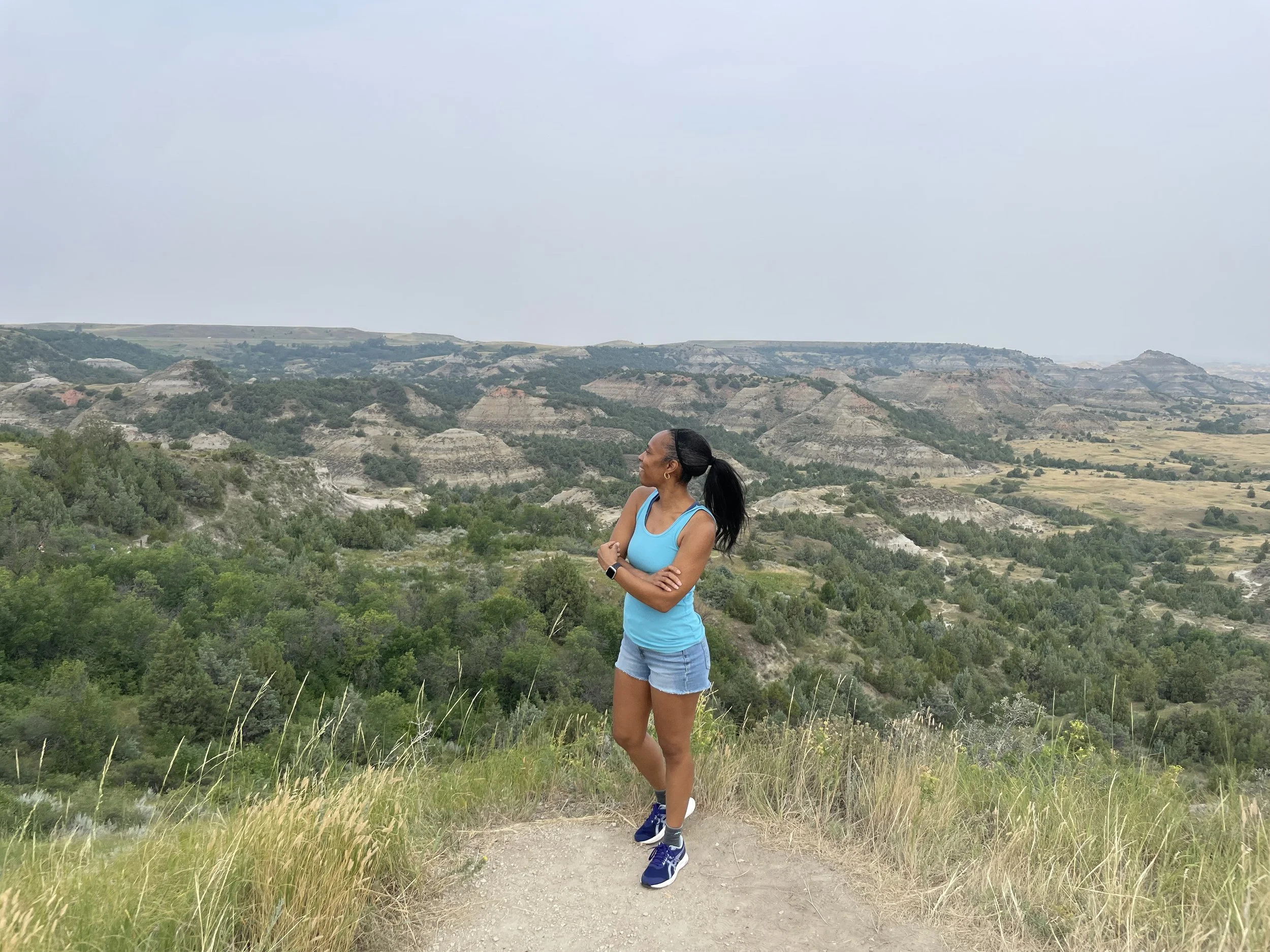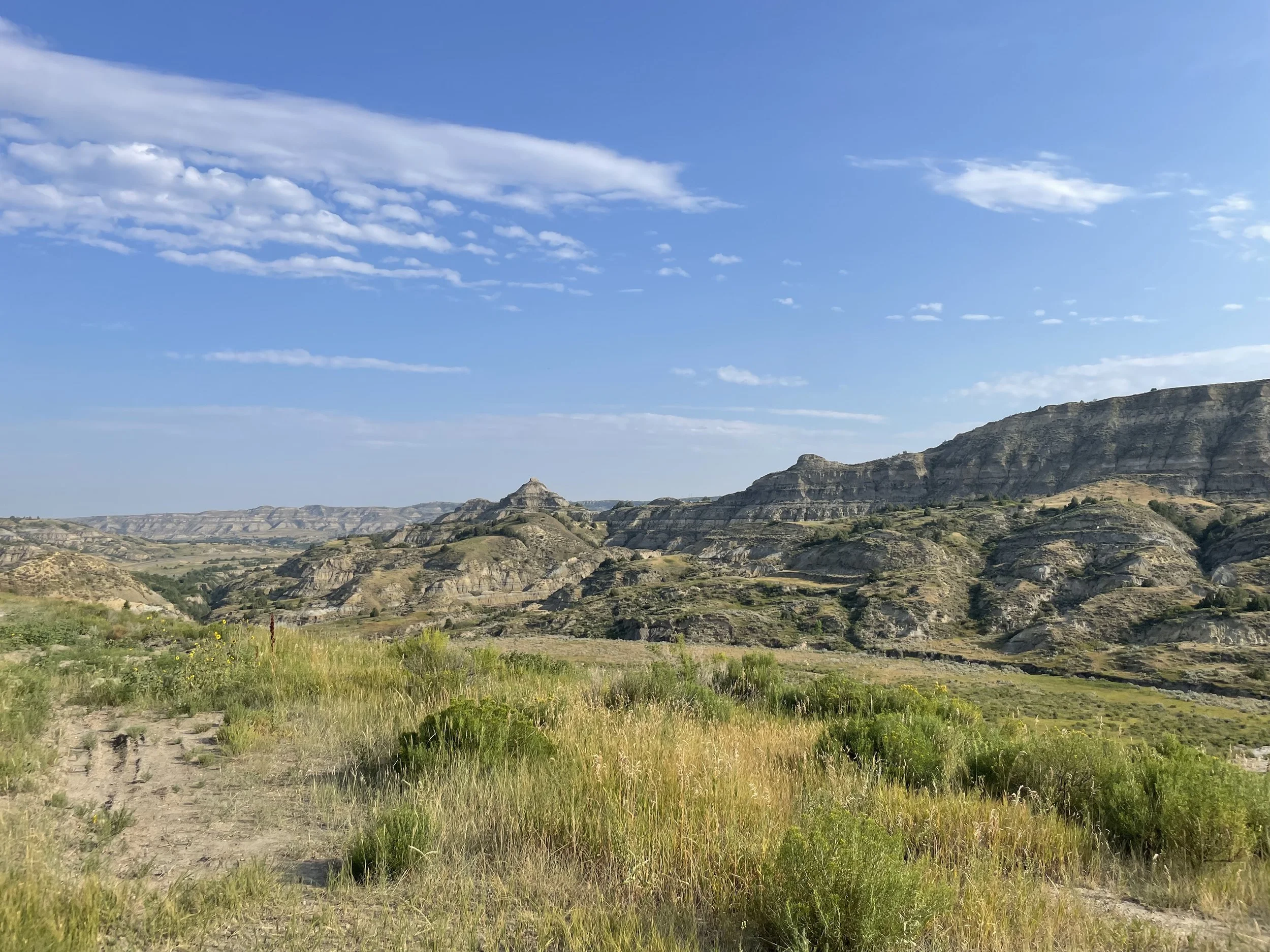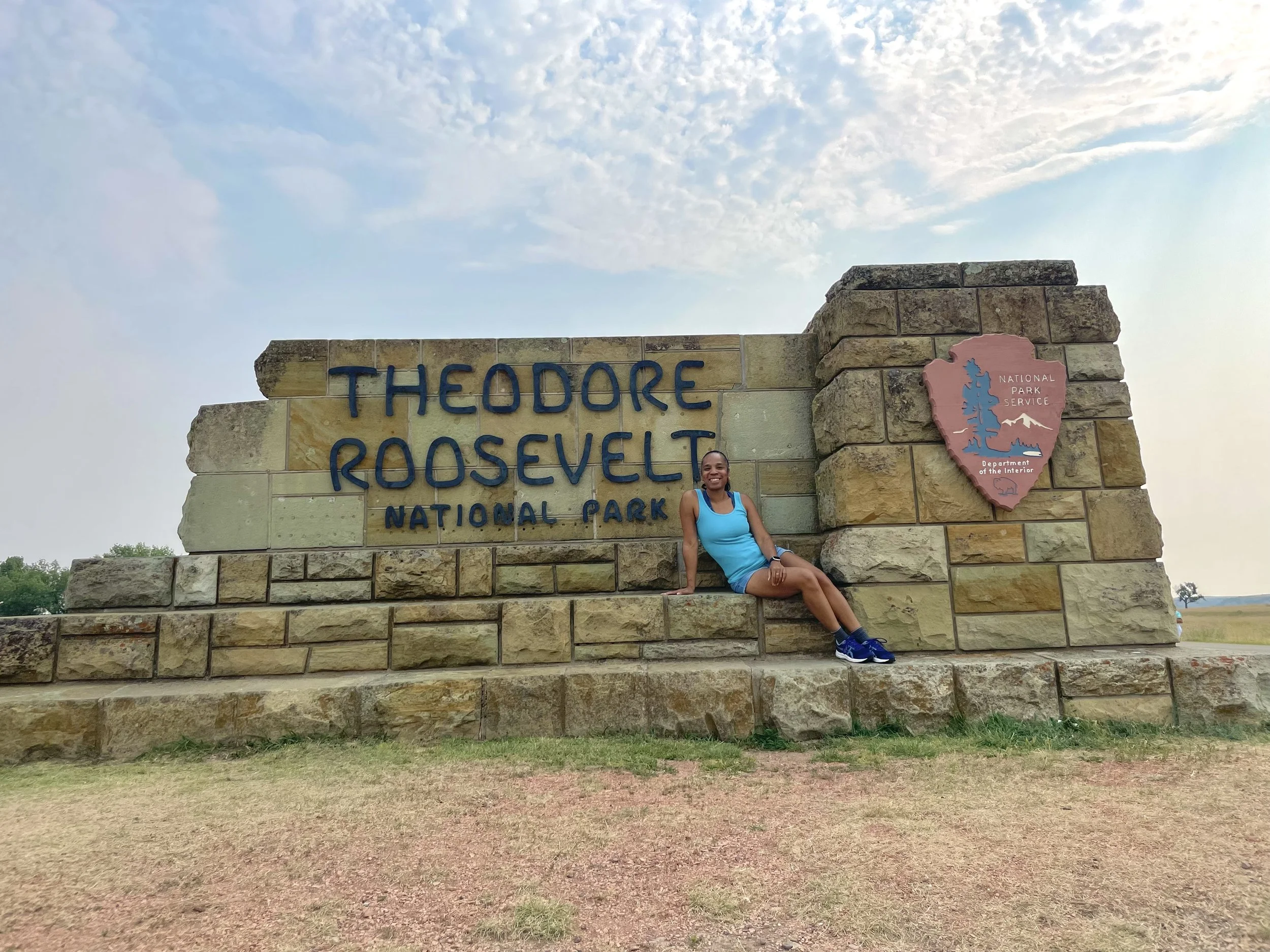#20 Theodore Roosevelt National Park, North Dakota
I drove all the way across the state of North Dakota to visit Theodore Roosevelt National Park. After flying into Fargo, I rented a car and hit the road, making the 4.5-hour drive west along I-94. The route is long, flat, and straight—a classic slice of the Great Plains. But as you edge closer to the park, the scenery begins to shift. Rolling prairies give way to the rugged terrain of the Badlands, and you know you’re about to experience something special.
Welcome to the Park
The first thing I did upon arrival? I stopped at the park sign, of course! It’s a must for any national park visit. After snapping a quick photo, I headed into the South Unit Visitor Center, located in the town of Medora, right near the park’s main entrance. The visitor center is informative and well laid out, offering exhibits on Roosevelt’s time in the Badlands, his conservation legacy, and the park’s unique geology and wildlife. I picked up my National Parks Passport stamp and spent a few minutes chatting with rangers about trail conditions and wildlife sightings.
South Unit Visitor Center
Visitor Centers in Theodore Roosevelt National Park
Whether you’re entering from the South or exploring the more remote corners of the park, each visitor center provides unique insights and services:
South Unit Visitor Center – Medora, ND
Address: 201 East River Road North, Medora, ND 58645
Phone: (701) 623-4466
Highlights: Located near the Maltese Cross Cabin, it features interpretive exhibits, a park film, restrooms, and ranger support. Open year-round with seasonal hours.
Painted Canyon Visitor Center – Belfield, ND
Address: Exit 32, Interstate 94, Belfield, ND 58622
Phone: (701) 575-4020
Highlights: Incredible overlook of the Badlands right off the interstate. Great for a quick stop, short hikes, and interpretive displays. Open seasonally.
North Unit Visitor Center – Watford City, ND
Address: 208 Scenic Drive, Watford City, ND 58854
Phone: (701) 842-2333
Highlights: Offers maps, exhibits, a short film, and trip planning help. Conveniently located near the start of the scenic drive in the North Unit.
Elkhorn Ranch Unit – Remote
Access: About 35 miles north of Medora, no facilities or staffed visitor center
Highlights: Site of Theodore Roosevelt’s ranch. Interpretive panels tell the story of his time here. A 0.7-mile walk from the parking area leads to the ranch site.
Park Fees and Passes
Entrance Fee: $30 per vehicle (valid for 7 days)
Motorcycle Fee: $25
Per Person (on foot or bicycle): $15
Annual Pass for Theodore Roosevelt NP: $55
America the Beautiful Pass: $80 (Grants access to all U.S. national parks and federal lands)
Passes can be purchased at visitor centers or online through the NPS website.
A Bit About The Park
Theodore Roosevelt National Park is the only national park named after a person—a fitting tribute to the 26th President of the United States, whose time in the North Dakota Badlands deeply influenced his conservation ethos. Covering more than 70,000 acres, the park preserves the dramatic landscapes Roosevelt fell in love with: jagged buttes, wide-open prairies, and the winding Little Missouri River.
The park is divided into three units: South Unit, North Unit, and the more remote Elkhorn Ranch Unit, where Roosevelt’s actual ranch once stood.
Top Hiking Trails in Theodore Roosevelt National Park
Whether you’re a seasoned hiker or a casual wanderer, the park has something for everyone:
Painted Canyon Nature Trail (South Unit) – A short, 0.9-mile loop with scenic views of the canyon right from the overlook. Great for beginners.
Caprock Coulee Trail (North Unit) – This moderate 4.4-mile loop is one of the best hikes in the park, offering stunning Badlands views and great opportunities to spot wildlife.
Petrified Forest Trail (South Unit) – Located in a more remote area of the park, this trail showcases ancient petrified wood and fewer crowds.
Boicourt Trail (South Unit) – A short and accessible trail (0.2 miles paved, 0.4 miles total) with a breathtaking overlook—especially beautiful at sunset.
Best Photography Spots
Oxbow Overlook (North Unit) – Sweeping views of the Little Missouri River curve below—absolutely magical at sunrise or sunset.
Boicourt Overlook (South Unit) – Jaw-dropping panoramic views, with layered buttes stretching endlessly into the horizon.
Painted Canyon Overlook (South Unit, off I-94) – A fantastic stop even before entering the park, perfect for capturing classic Badlands vistas.
Wildlife Loop on the Scenic Drive – Don’t forget your zoom lens; bison, prairie dogs, wild horses, and elk are commonly seen here.
Camping in the Park
Yes, there are excellent camping options available:
Cottonwood Campground (South Unit) – Open year-round with both reservable and first-come, first-served sites. Flush toilets and drinking water available in summer.
Juniper Campground (North Unit) – More remote and quieter. First-come, first-served only. Vault toilets and no water, so come prepared.
Backcountry Camping – Free permits available at visitor centers. Be ready for primitive conditions and potential wildlife encounters.
Accessibility
The park makes an effort to provide access to all visitors:
The South Unit Visitor Center is wheelchair accessible.
Boicourt Trail offers a paved section suitable for wheelchairs.
Scenic Loop Drive allows people with limited mobility to experience breathtaking vistas without hiking.
Accessible restrooms are available at the visitor center and some campgrounds.

